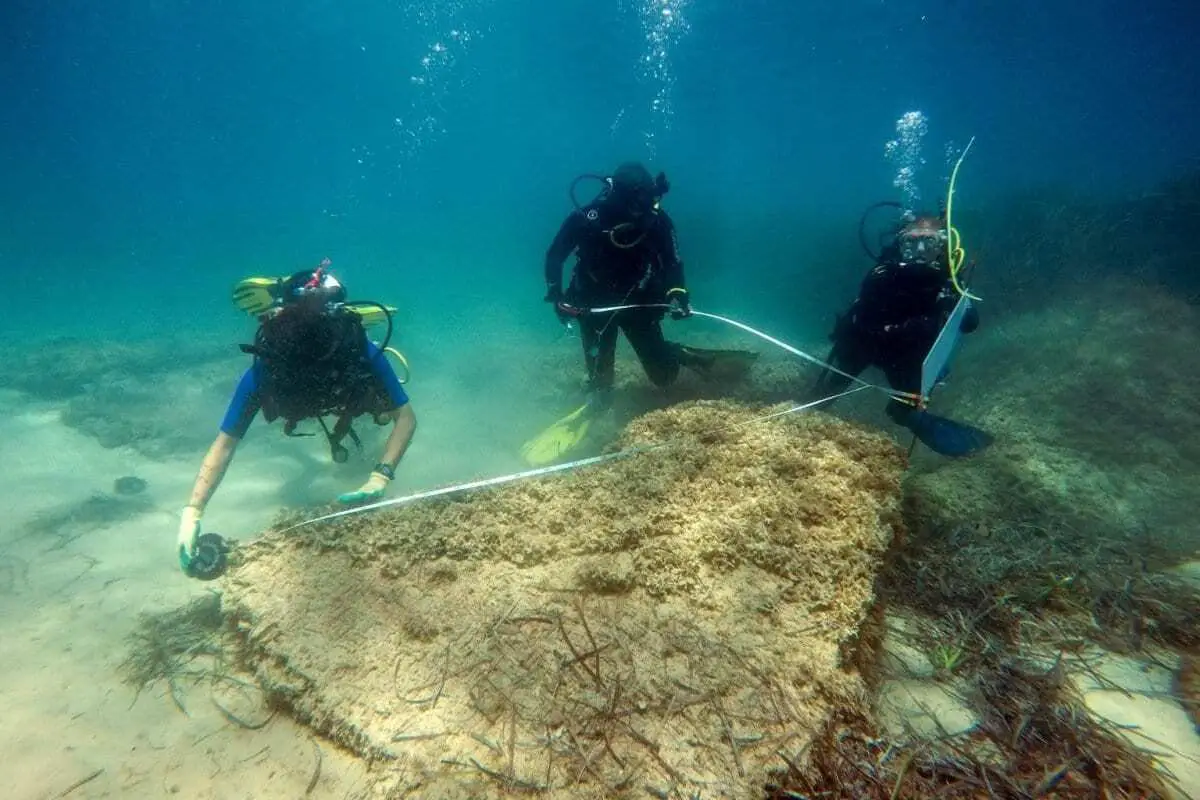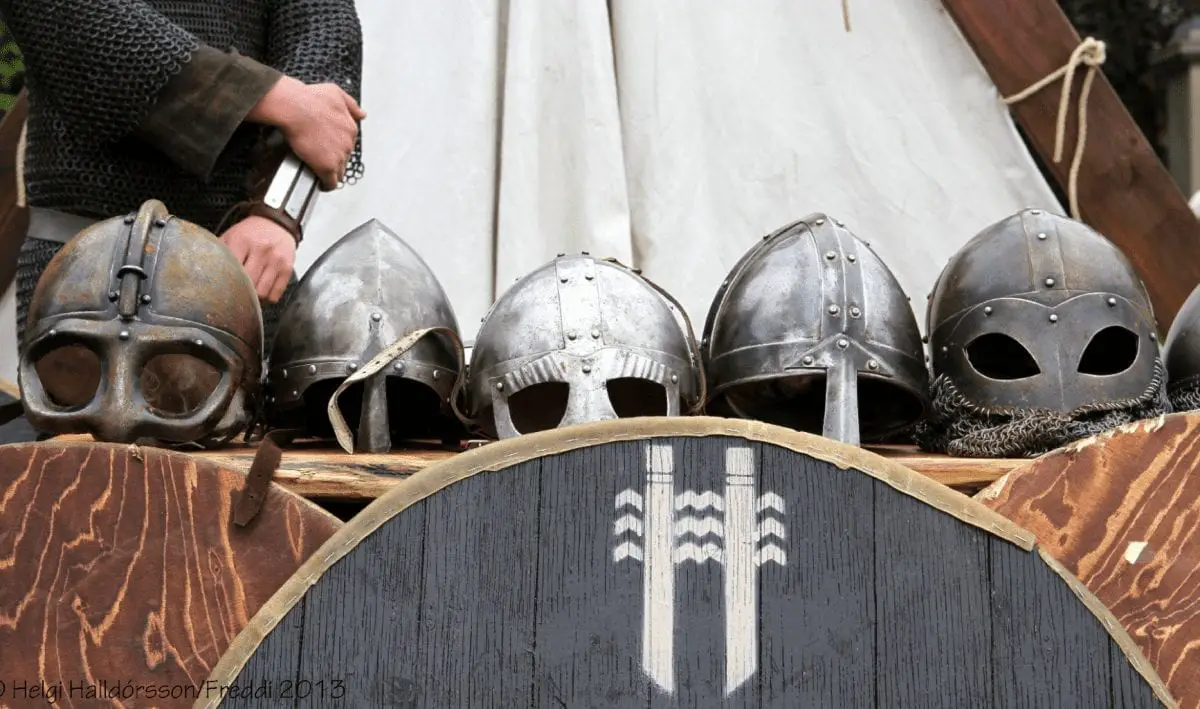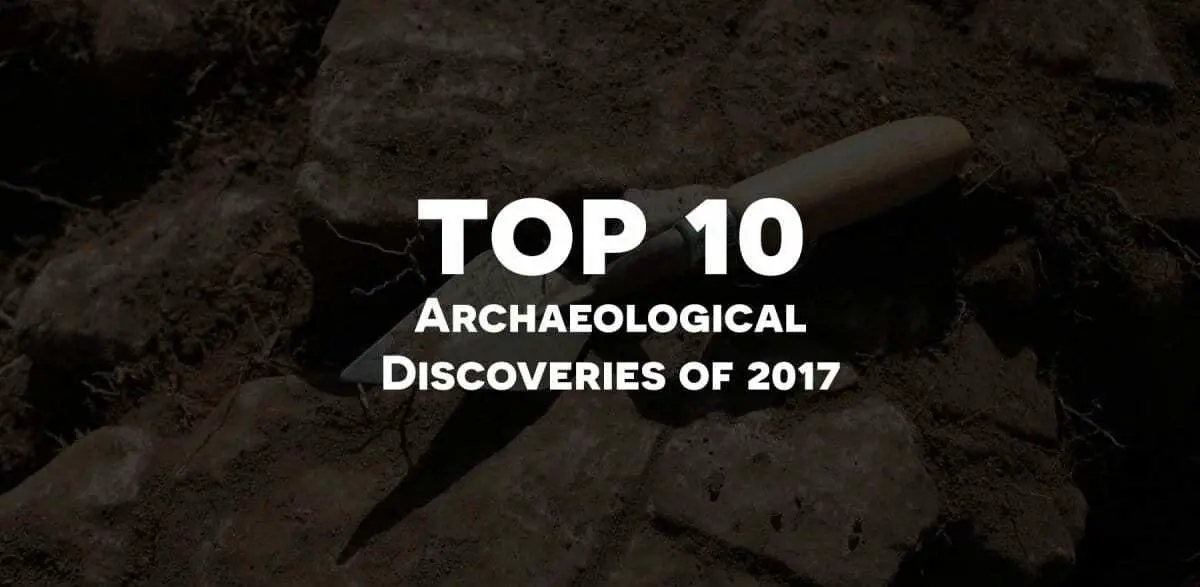1 – Ruins of Roman City of Neapolis discovered underwater
A vast 1,700 year old Roman settlement was discovered off the coast of Tunisia after several years of archaeological exploration in search of the ancient city of Neapolis.
Neapolis is believed to have been submerged after a tsunami in the 4th century AD destroyed most of it, as recorded by Roman soldier and historian Ammien Marcellin. The natural disaster also badly damaged Alexandria in modern Egypt and the Greek island of Crete.
Very little has been recorded about the city because the citizens of Neapolis sided with Carthage rather than Rome during the Third Punic War in 149–146 BC, which ultimately destroyed the rival civilisation and brought its territory under Roman control. Find out more

2 – First evidence for Julius Caesar’s invasion of Britain discovered
Based on new evidence, the team suggests that in 54BC Julius Caesar’s fleet first landed in Britain at Pegwell Bay on the Isle of Thanet, the north—east point of Kent.
This location matches Caesar’s own account of his landing in 54 BC, with three clues about the topography of the landing site being consistent with him having landed in Pegwell Bay: its visibility from the sea, the existence of a large open bay, and the presence of higher ground nearby.
The size, shape, date of the defences at Ebbsfleet and the presence of iron weapons including a Roman pilum (javelin) all suggest that the site at Ebbsfleet was once a Roman base of 1stcentury BC date. The archaeological team suggest the site may be up to 20 hectares in size and it is thought that the main purpose of the fort was to protect the ships of Caesar’s fleet that had been drawn up on to the nearby beach. Find out more

3 – Archaeologists discover remains of ancient Aztec temple & ball court
Archaeologists discovered a large circular temple, dedicated to the Aztec wind god Ehecatl-Quetzalcoatlin. The remains were uncovered behind the city’s colonial-era Roman Catholic Cathedral in the heart of Mexico City.
The temple was built between 1486-1502 during the reign of the Aztec Emper Ahuizotl, predecessor of the famed Moctezuma II, whom Hernan Cortes defeated during the conquest of Mexico by Spanish conquistadors. Only part of the ball court has survived, comprising of a staircase and section of a spectator stand. Estimates place the court at around 50 meters (165 feet) long. Find out more

4 – Discovery of Lost Dark Age Kingdom in Galloway
Archaeological research has revealed the location of a hitherto lost early medieval kingdom that was once pre-eminent in Scotland and Northern England.
The kingdom of Rheged is probably the most elusive of all the sixth century kingdoms of Dark Age Britain. Despite contributing a rich source of some of the earliest medieval poetry to be composed in Britain – the poetry of Taliesin who extolled the prowess of its king, Urien of Rheged – and fragments of early medieval historical records of Urien’s dominance in southern Scotland and northern England, the actual location of Rheged has long been shrouded in mystery. Find out more

5 – Archaeological detectives discover ‘secret square’ beneath world-famous Avebury stone circle
New archaeological survey reveals unique square megalithic monument at the heart of the World Heritage Site. Avebury was built over several hundred years in the 3rd millennium BC and contains three stone circles – including the largest stone circle in Europe which is 330m across and originally comprised around 100 huge standing stones.
A research team led by the University of Leicester and University of Southampton used a combination of soil resistance survey and Ground-Penetrating Radar to investigate the stone circle. The archaeologists who undertook the work think the construction of the square megalithic setting might have commemorated and monumentalised the location of an early Neolithic house – perhaps part of a founding settlement – subsequently used as the centre point of the Southern Inner Circle. Find out more

6 – Archaeologists uncover Viking Army Camp
A huge camp which was home to thousands of Vikings as they prepared to conquer England in the late ninth century has been uncovered by archaeologists. Established in Torksey, on the banks of the River Trent in Lincolnshire, the camp was used as the Vikings’ defensive and strategic position during the winter months.
The research, conducted by archaeologists at the Universities of Sheffield and York, has revealed how the camp was used by thousands of Viking warriors, women and children who lived there temporarily in tented accommodation. Find out more

7 – Rare glass spearhead found on Rottnest Island
Staff and students from The University of Western Australia’s School of Indigenous Studies made an exciting discovery of an emerald green glass spearhead during a University excursion on Rottnest Island (Wadjemup).
Professor Collard said the spearheads were believed to have been used for trade and exchange, building relationships and hunting of quokkas by Indigenous male prisoners who inhabited the island more than a century ago. Find out more

8 – Tomb of early classic maya ruler found in guatemala
The tomb of a Maya ruler was excavated last summer at the Classic Maya city of Waka’ in northern Guatemala.
The tomb, discovered by Guatemalan archaeologists of the U.S.-Guatemalan El Perú-Waka’ Archaeological Project (Proyecto Arqueológico Waka’, or PAW), has been provisionally dated by ceramic analysis to 300-350 A.D., making it the earliest known royal tomb in the northwestern Petén region of Guatemala. El Perú-Waka’ is about 40 miles west of the famous Maya site of Tikal near the San Pedro Martir River in Laguna del Tigre National Park. In the Classic period, this royal city commanded major trade routes running north to south and east to west. Find out more

9 – Scientists detect mystery void in Great Pyramid of Giza
Particles from outer space have helped uncover a mysterious void deep inside the Great Pyramid of Giza, the largest pyramid in Egypt.
Researchers made the discovery using high-tech devices that typically are used only for experiments in particle physics. (That’s the study of particles smaller than atoms.) The detectors scouted for particles streaming from outer space through the ancient structure’s thick stone. This search turned up a previously unknown empty space, or void. That unknown chamber is the first major structure discovered inside the roughly 4,500-year-old Great Pyramid since the 19th century. Find out more

10 – Two missing World War II B-25 bombers discovered off Papua New Guinea
Two B-25 bombers associated with American servicemen missing in action from World War II were recently documented in the waters off Papua New Guinea by Project Recover–a collaborative team of marine scientists, archaeologists and volunteers who have combined efforts to locate aircraft and associated MIAs from World War II. In its search of nearly 10 square kilometers, Project Recover located the debris field of a B-25 bomber that had been missing for over 70 years. Find out more

Do you disagree with our list? Comment what your top ten would be below in the comments section.





